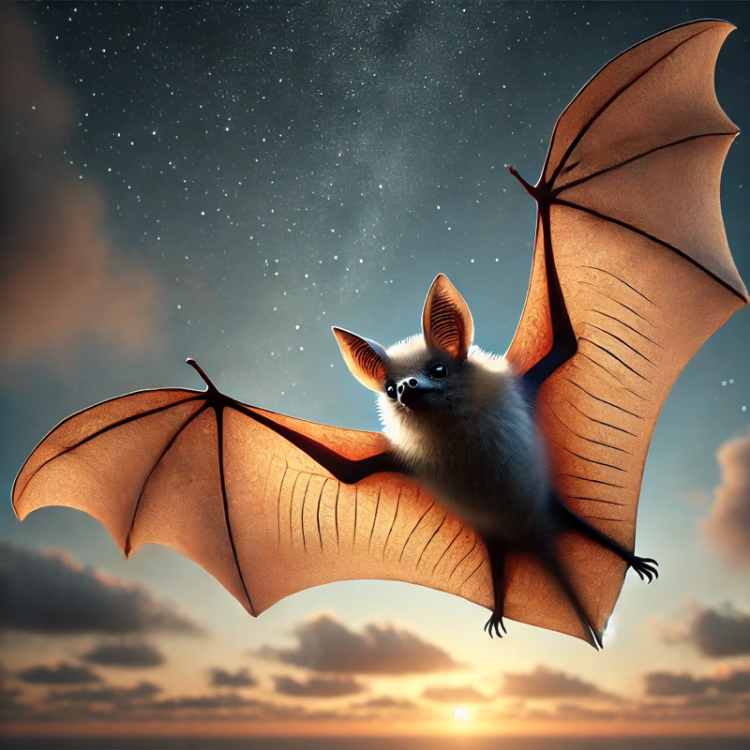Breaking the Speed Barrier: The High-Flying Brazilian Free-Tailed Bat
When you think of fast-flying creatures, birds like falcons or swifts may come to mind. However, in terms of level flight, some bats, particularly the Brazilian free-tailed bat (Tadarida brasiliensis), take speed to an entirely new level. These incredible mammals can reach speeds of up to 99.5 miles per hour (160 kilometers per hour) in horizontal flight, surpassing the fastest birds in this category. While birds like the peregrine falcon hold the overall speed record during dives, the Brazilian free-tailed bat reigns supreme for sustained, level flight.
How Do They Achieve Such Speed?
The Brazilian free-tailed bat’s velocity is a marvel of anatomical design. Their flexible wings, made of a thin membrane stretched over elongated finger bones, allow for precise adjustments mid-flight, optimizing their performance whether they’re maneuvering or accelerating. Unlike many other flying creatures, bats generate lift efficiently during their unique wing strokes, giving them exceptional aerial control. Their sleek, lightweight bodies and long, narrow wings, adapted for open-air environments, further enhance their ability to achieve and sustain incredible speeds. Researchers have tracked these bats using radio transmitters, confirming their record-breaking horizontal flight speeds.
Why Do They Fly So Fast?
For the Brazilian free-tailed bat, speed is essential for survival. Their incredible velocity helps them cover vast distances efficiently, especially when chasing insect swarms in open skies. While speed can also aid in evading nocturnal predators like owls, their primary advantage comes from their ability to navigate quickly between feeding and roosting grounds. Migration behavior varies among populations, with some bats traveling long distances while others remain in a single region depending on environmental conditions.
Comparing to Other Speedsters
Though the Brazilian free-tailed bat holds the record for fastest level flight among animals, it’s important to note that peregrine falcons achieve higher speeds during hunting dives, reaching over 200 miles per hour (322 kilometers per hour). This distinction underscores the diverse adaptations of flying creatures, each designed to excel in its unique ecological role.
Jehovah’s Marvelous Creation
The Brazilian free-tailed bat’s remarkable flight abilities are a testament to the ingenuity and care found in Jehovah’s creations. From its flexible wings to its astonishing speed, every detail reflects the wisdom of a Designer who equips His creatures perfectly for their environment. Whether we observe animals in the sky, on land, or in the sea, they serve as reminders of Jehovah’s unmatched power and creativity. Scriptures such as Job 12:7-9 and Psalm 19:1 invite us to reflect on how the natural world declares His glory and teaches us about His qualities.
Fast, Fearless, and Fascinating
The Brazilian free-tailed bat may not be as celebrated as other fast flyers, but its abilities are no less remarkable. From high-speed pursuits to long migrations, this tiny mammal is a testament to the incredible diversity and ingenuity found in the animal kingdom. Its story reminds us of the countless ways Jehovah’s creations enrich our world and invite us to reflect on the wisdom behind them.
Sources
1. Scientific American: Insights into bat flight speeds and mechanics
2. Smithsonian Magazine: Research on Brazilian free-tailed bat speed
3. Journal of Mammalogy: Wing morphology and flight efficiency in bats
4. National Geographic: Research on tracking methods for bat speed
5. New World Translation of the Holy Scriptures: Job 12:7-9, Psalm 19:1
Edited by dljbsp


0 Comments
Recommended Comments
There are no comments to display.
Join the conversation with your brothers and sisters!
You are posting as a guest. If you are already a member, sign in now to post with your existing account.
Note: Your post will require moderator approval before it will be visible.